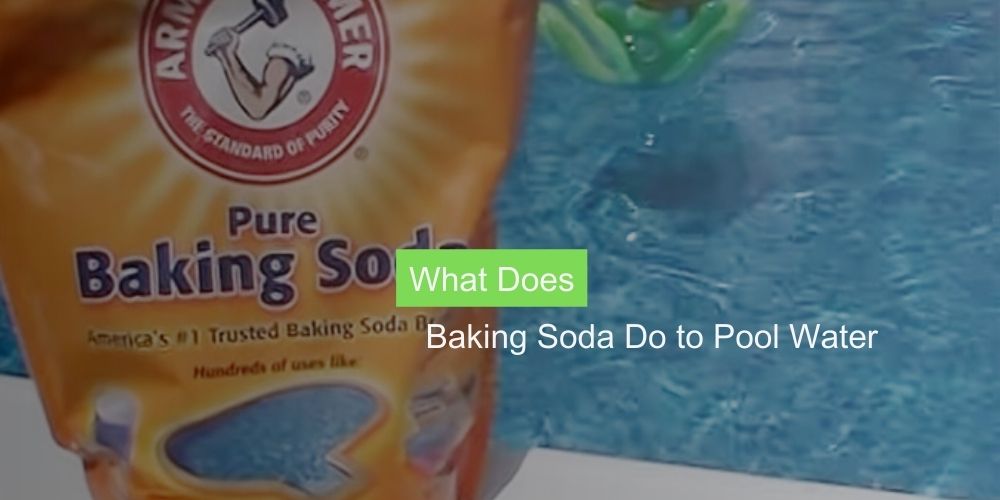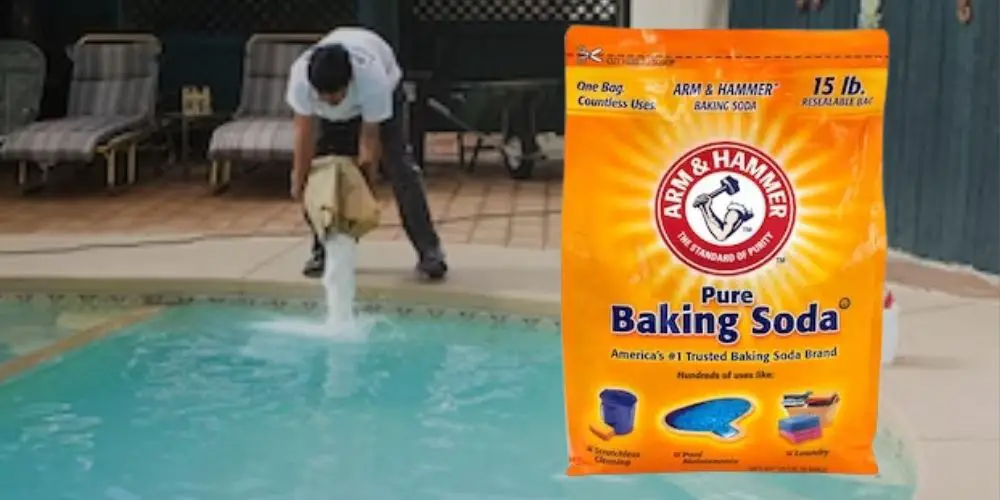
Maintaining proper pH levels in your pool is essential for a clean and enjoyable swimming experience. While there are many chemicals available for pH adjustment, one household item that can do the trick is baking soda. In this blog, we’ll explore the role of baking soda in pool water pH maintenance and its benefits. But first, let’s understand baking soda and its common uses. Additionally, we’ll highlight the importance of maintaining the right pH levels in your pool for sanitization, swimmer comfort, and equipment longevity. So, let’s dive in and discover the wonders of using baking soda for pool water maintenance!
What Does Baking Soda Do to Pool Water

pH is a critical factor in pool maintenance as it determines the water’s acidity or alkalinity. Maintaining the right pH level is essential for effective sanitization and swimmer comfort. The ideal pH range for pool water is 7.2 to 7.8, slightly basic. High acidity can damage pool fixtures, irritate swimmers, and reduce sanitizer effectiveness. Excessive alkalinity leads to scale deposits, equipment issues, and cloudy water. Maintaining the proper pH balance is key to a safe and enjoyable swimming experience.
Role of Baking Soda in Balancing Pool Water pH
Baking soda is a versatile and cost-effective solution for balancing pH levels in pool water. It acts as a pH buffer, adjusting acidity or alkalinity as needed. Baking soda’s chemical properties allow it to quickly distribute and regulate pH without significantly affecting other water chemistry parameters. Compared to other chemicals, baking soda is readily accessible, natural, gentle, and user-friendly. Its benefits include affordability, versatility, and ease of use. By utilizing baking soda, pool owners can maintain optimal pH levels for effective sanitization, swimmer comfort, and equipment longevity. Let’s explore how to use baking soda in the next section and unlock the potential of this common household item for your pool water.
Steps to Use Baking Soda in Pool Water
Maintaining proper pH levels in your pool water using baking soda is a straightforward process. By following a few simple steps, you can ensure that your pool remains balanced and inviting. Let’s dive into the steps involved:
- Test the pool water pH using a test kit.
- Calculate the required amount of baking soda for pH adjustment based on pool size and desired pH level.
- Pre-dissolve the baking soda in a bucket of water.
- Slowly pour the pre-dissolved baking soda mixture into the pool.
- Run the pool pump to circulate the water and distribute the baking soda evenly.
Additional Uses of Baking Soda in Pool Maintenance
Aside from balancing pH levels, baking soda has additional uses in pool maintenance. Let’s explore two of these applications:
- Baking soda can help control total dissolved solids (TDS) in the water.
- It can assist in addressing minor stains and discoloration in the pool.
Incorporating baking soda into your pool maintenance routine offers various benefits. It’s a versatile and cost-effective solution for a balanced and beautiful pool.
Precautions and Considerations
While baking soda is generally safe to use in pool water, it’s important to take certain precautions and considerations to ensure a smooth and hassle-free experience. Let’s explore some important points to keep in mind:
- Safety measures: Wear protective gear when handling baking soda and store it properly.
- Potential risks: Overdosing on baking soda can disrupt water chemistry, leading to cloudy water and reduced sanitizer effectiveness. Monitor pH levels and follow dosage guidelines.
- Consulting professionals: For complex pH issues or persistent water problems, seek guidance from pool professionals who have expertise in water chemistry.
FAQs – Baking Soda and Pool Water Maintenance
When should I add baking soda to my pool?
If the pH is below 7.2 and the alkalinity is below 110 ppm, it’s time to add baking soda to your pool. Baking soda works as a pH and alkalinity increaser, helping to bring the levels closer to the recommended range and prevent corrosion.
What happens if I put too much baking soda in my pool?
Adding too much baking soda to hard water can lead to the build-up of calcium in your pool. Excessive calcium can cause cloudiness and scale formation on the pool’s surface, affecting water clarity and overall maintenance.
Will baking soda make my pool water clear?
Yes, adding baking soda to your pool can improve water clarity. It raises both the pH and alkalinity levels, enhancing the pool’s clarity and stability. Many commercial pool cleaners utilize baking soda as a primary active ingredient, but you can create a more natural remedy by using baking soda directly.
Does baking soda help with algae in a pool?
Yes, baking soda can be effective in treating algae in your pool. Grab a brush and apply baking soda directly to the affected areas. Bicarbonate, the active ingredient in baking soda, helps kill algae and loosen it from the walls. Ensure thorough cleaning to remove all traces of algae, especially in the case of persistent black algae.
Final Thoughts
Baking soda is a cost-effective and natural solution for maintaining a balanced pool. It helps adjust pH levels, increase alkalinity, and address minor water chemistry issues. However, use it with caution, avoiding excessive amounts to prevent complications. Regularly test and monitor pH levels and seek professional help for complex problems. Embrace the benefits of baking soda while practicing proper pool maintenance for a refreshing and enjoyable swimming experience.

Hi, This is Josh. I am a former competitive swimmer and current fitness enthusiast.
I created this site to share my love of swimming with the world!

